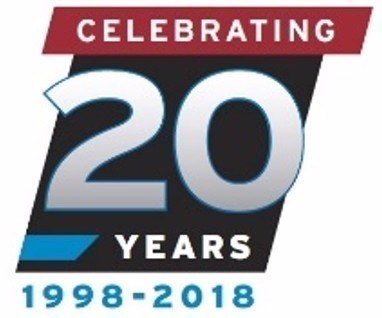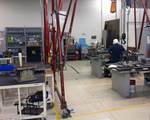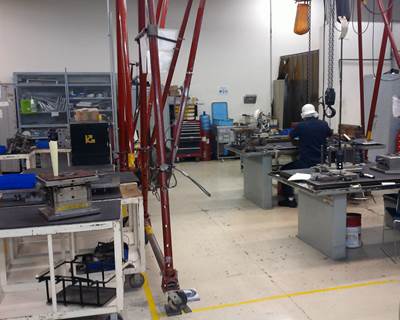Top 10 Game-Changing Technologies
As part of our 20-year anniversary, readers share their top most impactful technologies since 1998.
As part of its 20-year anniversary, MoldMaking Technology reached out to readers and asked them to list what they believe are the top most impactful technologies since 1998.
1. Data from additive manufacturing, design, build and maintenance to machining, automation and inspection/measurement has transformed the products and processes of moldmaking. The ability to capture a company’s manufacturing know-how digitally, and then having the ability to reuse it with little to no error has had one of the biggest impacts on the industry relative to other changes. That newfound power includes the ability to work with and standardize around a process, which enables a company to shorten lead times and stay competitive with overseas companies.
2. 3D printing or additive manufacturing (AM) in conjunction with five-axis simultaneous machining has eliminated or significantly reduced the use of die-sinking EDM. 3D printing makes possible the absolute approval of a product before building the mold for it, and it facilitates the seamless transfer of the electronic geometry directly into the CAM software to ensure the production of an acceptable part piece. AM also makes it possible to create channels with conformal cooling to improve molding cycle times and accuracy.
3. Automation and robotics has helped the industry move more toward lights-out machining. This includes automation combined with internal process mapping, more automated presetting of parts and electrodes outside of the machine tools and automation that massively reduces grinding work.
4. Advances in five-axis, high-speed machining have further improved productivity and accuracy. For example, five-axis high-speed cutting of hardened mold inserts right to size with a near-mirror surface finish and tolerances of 3–5 microns or better; five-axis machining of intricate details, which spares shops from employing slower, more expensive processes like EDM; and, combining five-axis technology with work cells and process development.
5. Mold maintenance is no longer an afterthought. It is now employed proactively to help reduce mold downtime. The growth of true preventive maintenance encompasses accurately monitoring issues and corrective actions over time with data discipline and employee accountability.
6. Getting real data for flows, pressures, temperature and so on has transformed processes in plastics part manufacturing. Moldmakers can now use mold flow analysis to calculate what may or may not happen to a specific mold design or build which guides moldmakers to faster success.
7. The use of lasers for measuring, welding, texturing, engraving and in additive manufacturing has made these processes more accurate and efficient.
8. In the past, the moldmaker controlled the “flow of information” for himself or for the machinist via a print or through verbal instructions, slowing down production and leaving room for errors. Today, machining programs provide the information, speeding production and improving accuracy. This processing information is captured at production planning meetings and the programs are created according to that plan.
9. Advanced computer technology, smarter computer logic, improved computer speed, and the reduced cost and size of computers has made CNC control affordable on most machines. These advancements have also made it financially possible to purchase and upgrade real engineering computers. Because of CNC machines, coordinate measuring machines (CMMs) and advanced engineering software, shops require fewer employees but achieve higher throughput and cut-to-model capability.
10. CAD/CAM software has continued to reduce the time it takes to make a mold. Simultaneously, the software enables moldmakers to take on more complex parts and improve plastic-part quality. Advancements in 3D modeling have also enabled reverse engineering, so moldmakers can generate cavity and core geometry from the approved electronic 3D model. Moldmakers can then download that geometry to a CAM system to generate NC code to machine the mold. Today’s moldmakers are not as intimate with the mold geometry as moldmakers of the past, but that is no longer necessary with today’s technology.
Get Social and Be a Part of the 20th Anniversary Coverage with #MMTMag20 on
Related Content
From Injection Mold Venting to Runnerless Micro Molds: MMT's Top-Viewed June Content
The MoldMaking Technology team has compiled a list of the top-viewed June content based on analytics. This month, we covered an array of topics including injection mold venting, business strategies and runnerless micro molds. Take a look at what you might have missed!
Read MoreMold Design Review: The Complete Checklist
Gerardo (Jerry) Miranda III, former global tooling manager for Oakley sunglasses, reshares his complete mold design checklist, an essential part of the product time and cost-to-market process.
Read MoreEditorial Guidelines: Editorial Advisory Board
The Editorial Advisory Board of MoldMaking Technology is made up of authorities with expertise within their respective business, industry, technology and profession. Their role is to advise on timely issues, trends, advances in the field, offer editorial thought and direction, review and comment on specific articles and generally act as a sounding board and a conscience for the publication.
Read MoreMaking Quick and Easy Kaizen Work for Your Shop
Within each person is unlimited creative potential to improve shop operations.
Read MoreRead Next
Maintenance Matters: Look How Far Mold Repair Has Come
To understand how repair shops have changed over 20 years, look at a company’s ability to break down, measure and apply specific data in the five factors of total mold control.
Read MoreReasons to Use Fiber Lasers for Mold Cleaning
Fiber lasers offer a simplicity, speed, control and portability, minimizing mold cleaning risks.
Read MoreAre You a Moldmaker Considering 3D Printing? Consider the 3D Printing Workshop at NPE2024
Presentations will cover 3D printing for mold tooling, material innovation, product development, bridge production and full-scale, high-volume additive manufacturing.
Read More










.jpg;maxWidth=300;quality=90)



_300x250 1.png;maxWidth=300;quality=90)













.jpg;maxWidth=970;quality=90)